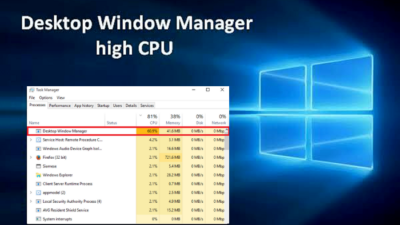Over the past few updates, Chrome’s CPU utilization has increased much more than before. Apart from newer features, there are some concerning factors that are causing high CPU usage for many users.
If you’re experiencing abnormally high processor utilization for chrome & wondering how to fix it, you’ve come to the right place.
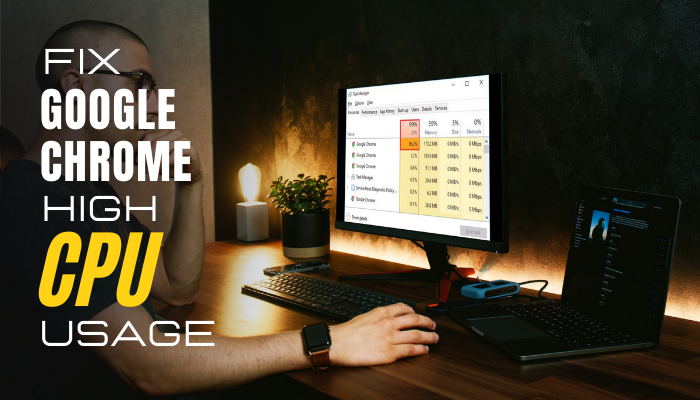
Let’s dive into this article & discuss everything you need to do to lessen Chrome’s CPU usage.
Why is My Google Chrome Taking Up So Much CPU?
Knowing the actual cause of an issue can contribute a lot to troubleshooting it properly. There are many possible reasons for Chrome taking up abnormally high resources. These are typically related to your browser’s behavior.
Here’s why Google Chrome is using so much CPU:
- Too many tabs opened at once
- Resource-heavy extensions
- Excessive amounts of ads
- Possible malware attack
- Streaming very high-quality (8k) video
- Auto-playing videos, animations, etc
- Technical issues such as bugs or glitches
- Weak hardware
- Compatibility issues
Additionally, Windows network firewall and other background running apps can also conflict with the browser’s operation. Not to mention, unoptimized websites can introduce a lot of technical issues, which can spike the browser’s CPU utilization.
Fix Google Chrome Causing High CPU Usage
If google chrome is using too much CPU due to whatever reason, check Chrome’s built-in task manager to pinpoint the CPU-hogging task & close it. Additionally, remove any resource-heavy extension, use an ad-blocker, scan for potential malware & restore Chrome settings.
There are some additional methods you can try to resolve this issue. Below, I have briefly explained all these solutions in great detail. But before we begin, make sure the browser and the Windows OS on your computer are up to date.
Go through our epic guide on how to resolve the “Your clock is ahead/behind” error message in GABC Chrome browser.
Here’s how to reduce high CPU usage in Google Chrome:
1. Check Chrome’s Task Manager
Chrome browser has a built-in task manager which allows users to monitor the resource consumption of each running task. So you can pinpoint which task is causing excessively high CPU usage.
Click on the vertical ellipsis icon and hover your mouse cursor over More tools. Now select Task manager. Then click on the CPU tab to sort the tasks based on processor utilization. You’ll see the process that is consuming too much CPU. Select the task and hit End process. 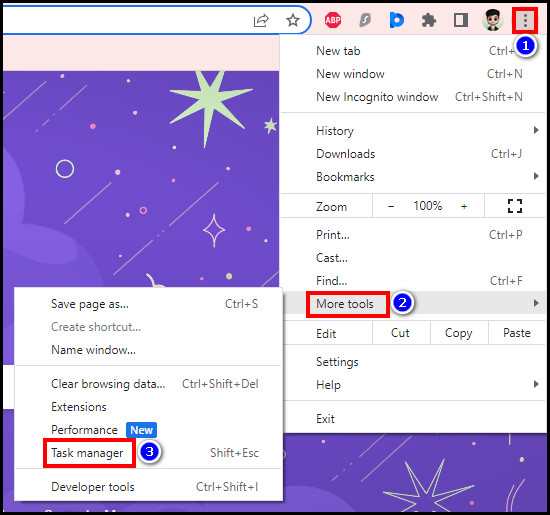
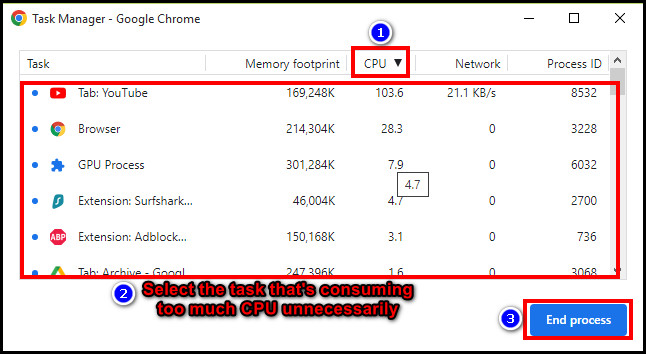
2. Disable Resource Heavy Extensions
Although browser extensions enhance your browsing experience, certain extensions consume much more resources than others. Many extensions, such as screen-capturing tools, run for each active tab and consume processor and memory resources in the background.
In such a case, you’ll notice that the browser’s CPU consumption has spiked much higher than usual. In order to remedy this situation, follow the above-mentioned method to find out which extension is the culprit.
Then click on the extension icon from the navigation bar and select More options/three-dot icon for the said extension. Now select Remove from Chrome. It’ll remove the extension from your browser. Do the same for other extensions that you don’t need.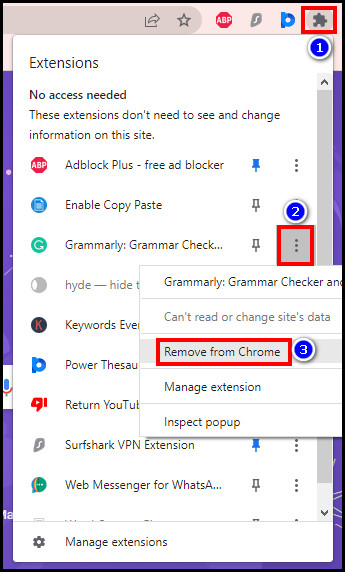
Is the system interrupt process giving you high CPU usage? Read our separate guide to fix this issue.
3. Close Unnecessary Tabs
A bunch of active tabs, especially the ones with video buffering, animations, and lots of intrusive ads, can really shoot up the resource consumption for the browser.
Don’t keep too many tabs open unnecessarily. Close any active tabs that you don’t need at the moment.
Additionally, you can use Chrome’s new performance tool from Settings > Performance. Now, toggle on Memory Saver and Energy Saver.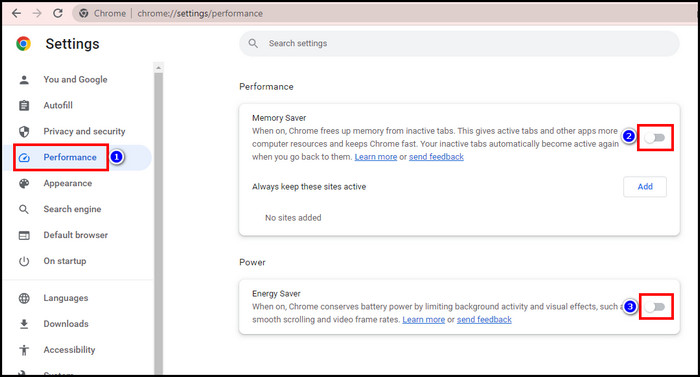
4. Free Up Space
Every time you browse the internet, the websites save some browser cache and cookies on your device. If you don’t clean these files, they can pile up and bog down the Chrome operations. This can cause higher processor, memory, and disk usage than usual.
Fortunately, you can get rid of this issue by simply clearing the browser data. To do so, click on the vertical ellipsis(⋮) icon and hover your mouse over More tools. Then select Clear browsing data…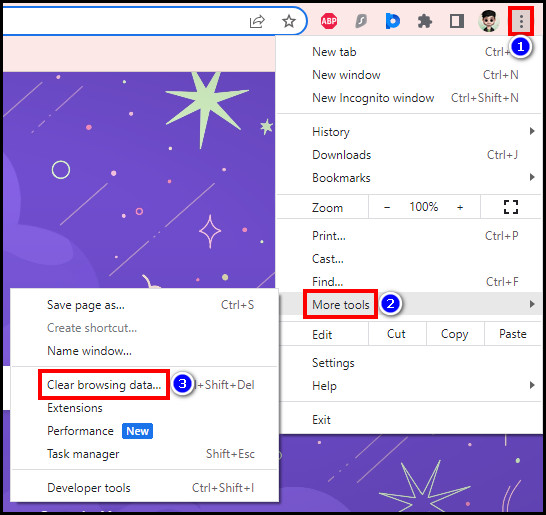
Now, navigate to the Advanced tab. Tick the boxes for Cookies and other site data, Cached images and files, and Hosted app data. Then hit Clear data.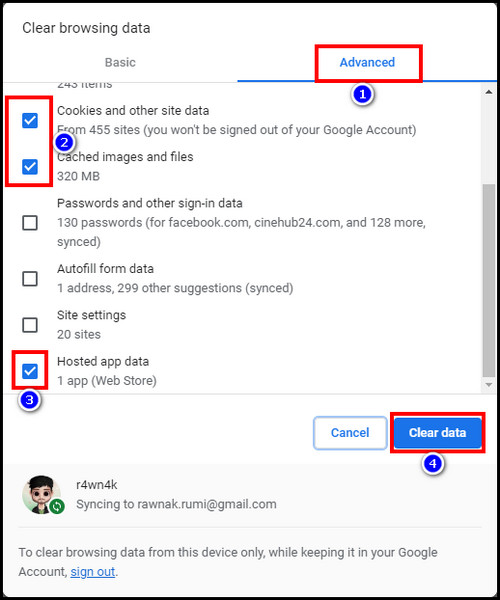
Freeing up storage is also a great way to breathe life on your new computer. Read our extensive guide to know why your computer is getting slow and how you can quicken it up.
5. Enable/Disable Hardware Acceleration
Enabling hardware acceleration in Chrome can take certain heavy workloads off of the CPU. It allows the browser to use hardware encoders to quickly perform a task and reduce overall CPU draw calls. Hence Google Chrome’s processor utilization reduces drastically.
Here’s how to enable hardware acceleration:
- Click on the vertical ellipsis(⋮) icon at the top-right corner of the screen.
- Select Settings.
- Scroll down and select System from the left side pane.
- Enable the toggle for Use hardware acceleration when available.
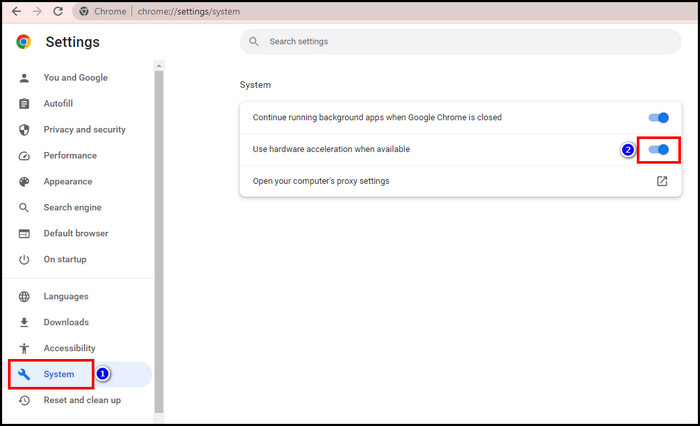
Now close the Chrome app and launch it again to see if the issue has been mitigated. If not, move on to the next step.
6. Scan for Malware
Your browser is the most common gateway for virus/malware attacks. Visiting unsafe sites can load trojan files and cause abnormally high resource consumption.
Since the browser is very much vulnerable to malware attacks, consider running a malware scan if you notice Google Chrome’s high CPU usage even when closed. Click on the Windows Search bar, type virus & threat and select Virus & threat protection. Now click on Quick scan.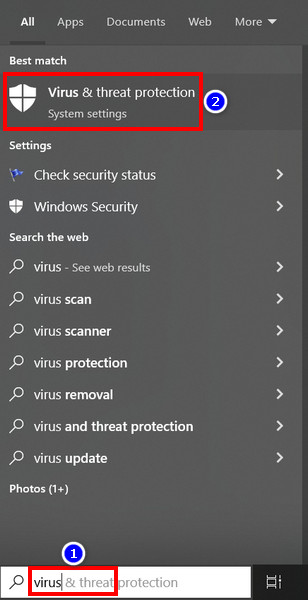
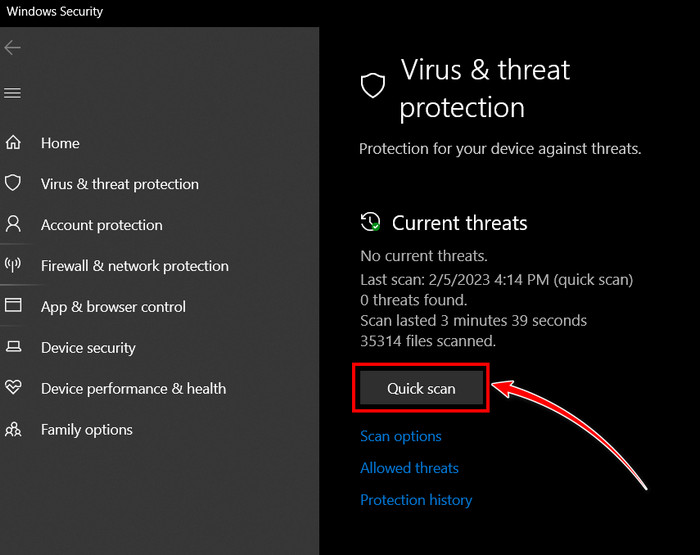
You can also use Chrome’s built-in malware cleanup tool for this task. Open the browser’s Settings and scroll down to find Reset and clean up section. Click on it and select Clean up computer. Now click on Find. Chrome will find and remove any harmful software from your PC.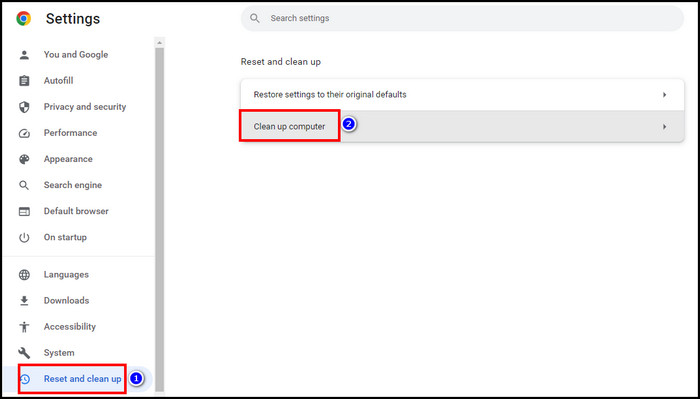

Viruses are also notorious for causing high CPU usage. If you see an unknown process hogging all your CPU resources, do check our article where we shed a light on this issue.
7. Restore Chrome Settings
Improper configuration can often enable wrong settings, which can trigger higher processor/disk utilization. One easy way to get rid of any man-made error is by restoring Google Chrome to its factory default settings.
Follow these steps to restore Chrome settings:
- Click on the three-dot icon(⋮) at the top-right corner of the screen.
- Select Settings.
- Scroll down and select Reset and clean up.
- Click on Restore settings to their original defaults > Reset settings.
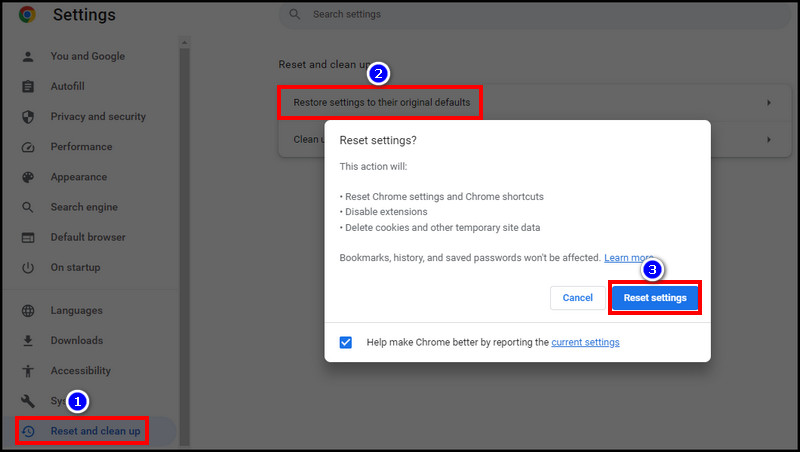
Now restart the browser and it should reset to its factory default.
8. Uninstall & Reinstall Chrome
If nothing else works, perform a clean install as a last resort. This should, in theory, remove any stacked bugs or corrupted files that might be the reason for higher CPU consumption.
Follow these steps to perform a clean install for Google Chrome:
- Press Windows key+S and type apps & features.
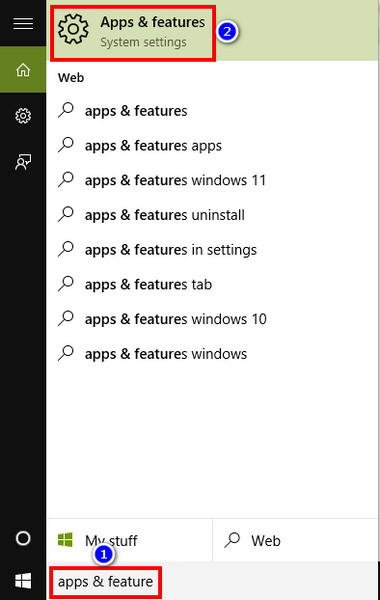
- Hit the Enter button on your keyboard.
- Scroll down and find Google Chrome.
- Select it and hit Uninstall.
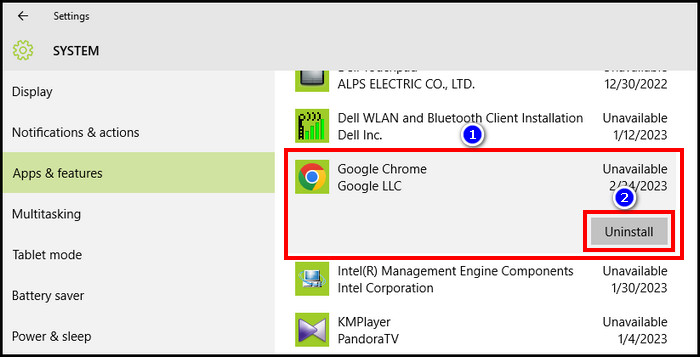
- Download the latest version from Google’s official site.
- Double-click on the set-up file to start the installation process.
Now follow the on-screen instruction and it should be good to go. This method might also come in handy when your keyboard is not working.
In case the issue still persists, consider switching to more hardware-friendly browsers such as Mozilla Firefox or Opera GX. You might also need to upgrade your hardware if it’s too outdated.
Frequently Asked Question
Is Chrome a CPU-heavy app?
Yes, Chrome is a CPU-dependent app. Processor utilization increases based on Chrome’s workload.
Does the newer version of Chrome use more CPU?
Yes. The newer version of Chrome uses updated codecs for video buffering, which eats up much more CPU resources than previous builds.
Final Thoughts
In case you’re getting sick & tired of Google Chrome’s various annoyances, consider switching to a more optimized & less demanding browser, such as Firefox, Opera GX, etc.
That’s about it. Hopefully, this guide has helped you reduce processor utilization & optimize performance for Chrome.
Adios!



